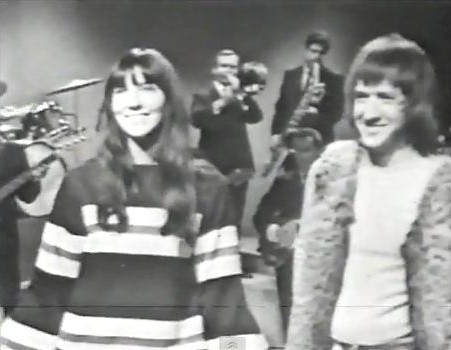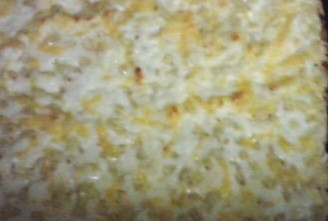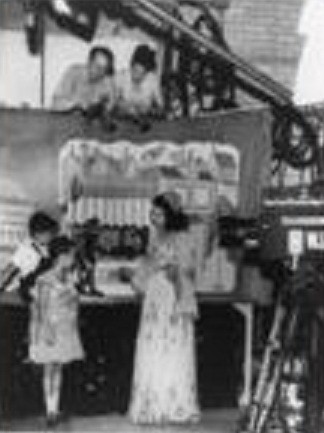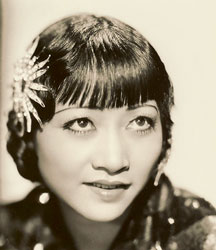This month's comics includes a one-shot from Marvel,
Avengers Origins: Scarlet Witch & Quicksilver. It's worth
again noting that Scarlet Witch, one of the most popular and long running members of the supergroup
The Avengers will not make it onscreen in the film this summer. Our biggest question was what did Scarlet Witch ever do to Mirco Pierfederici to make him draw her so boxy.
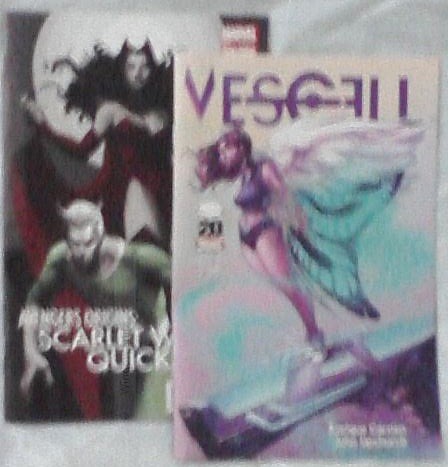
Another question would be: What did gay people ever do to Enrique Carrion? Carrion likes to note that he's the only Black comic writer at a major comic house currently (none at Marvel, none at Dark Knight and none at DC) and that he's also Latino. He thinks he offers diversity in
Vescell (Image Comics) and we'd be more likely to agree with him if it weren't so T&A and so homophobic. T&A? We're not talking clevage -- these are comics, after all. We're talking three shots of nude breasts with nipples and we're wondering why the hell we needed to see a fairy in a bathtub to begin with?
That's an actual fairy with wings. There's also full-on flamer and human Lee who is referred to as a "fairy" by hero Maruicio, Lee or is his cyborg male lover is referred to as "butt-buddy" by the winged fairy Short Wings and more. Of course, Batan also calls Lee "ruby red slippers" but that one might be understandable since Lee is wearing ruby red high heels. Which are displayed most obviously when Lee does a high kick dance step in his apartment. He makes reference to The Wizard of Oz, as well. And calls cyborg Batan "Tin Man." Which Batan hates. Batan is indifferent and distant to Lee throughout. So apparently there was self-loathing involved when the blond, human Lee picked out a 'muscular' robot who would only be happy when Lee was going down on him. Though Lee gives the robot blow jobs, we never see any reciprication.
It's obvious Enrique Carrion is highly familiar with stereotypes but has he ever spoken to an actual gay man? There's no indication he has and there's something deeply disturbing about a writer who is forever preaching the need for diversity also resorting to homophobic stereotypes and language.
Fortunately, Kate Kane is nobody's stereotype.
Batwoman has quickly become one of our favorite comic titles. In issue five, Batwoman appears to have vanquished the Weeping Woman but the missing children are still not found and something or someone named Medusa is now said to have them. Meanwhile she's given an offer she can't refuse: Join D.E.O. Yes, it's a mistake, even Batman shows up to tell her that. But the alternative? They'll go after her father and court martial him. In issue six, we find out that she at least got a new (bullet proof) costume out of it.

In her kitchen, she is surprised to find Director Bones and Agent Cameron Chase waiting for her there. Kate attempts to attack Agent Chase, but the Director jumps between them as Chase reveals that they already know that she is Batwoman. They inform her tha her cousin Bette gave up the information while she was near death (Bette was attacked by a Medusa henchman with a hooked hand). Director Bones explains that due to Chase's actions, Bette's life was saved, and they will take her to her if she agrees to make a deal.
They offer her a job with the DEO. Coincidentally, they want her to dismantle the organization known as Medusa. As an additional bonus, Director Bones informs her that unless she takes the offer, her father will be put in prison for stealing military hardware, funding a vigilante, and covering up a terrorist act in order to hide his own illegal activities. If she agrees to take the job, Jacob Kane will be left alone.
Resigned, Kate accepts the offer. She visits Bette in the hospital, and tells her unconscious cousin that she has turned down Batman's offer to join Batman Incorporated. Batman had, until that point, been stealthily hiding in the room already. He steps out of the shadows and warns that working with the DEO will be a mistake that will eventually put her at odds with him. Kate responds that she is just using them to get the children back, and that she knows which lines must not be crossed. Before leaving, Batman warns that Director Bones will challenge that knowledge at every opportunity, and eventually, she will be forced to make an impossible decision.
Later, Batwoman visits the parents of one of the missing children and promises that while the Weeping Woman is gone, she will find the missing children at any cost. It turns out, a man named Marco behind things explains to his partner, that the Weeping Woman was only one part of the plan. The goal is to harness superstitions to allow them to control Gotham City. While Jacob Kane stays at the hospital with Bette, Maggie and Kate get closer until Maggie comments on the fact that Kate mentioned her father for the first time. She also notes a bad bruise on Kate's shoulder (from fighting Medusa henchman while patrolling the night as Batwoman). Kate doesn't like personal questions. You'll love the work J.H. Williams III, W. Haden Blackman, Amy Reeder, Richard Friend and Rob Hunter are doing with this title.
From Batwoman to Batgirl, Barbara Gordon spent over two decades paralyzed. But that was before DC launched their "THE NEW 52!" line. Gail Simone's steering the relaunch with Adrian Syaf and Vincente Cifuentes doing pencil and ink. Barbara was still shot by the Joker in the spine; however, she's now had spinal surgery and, after a year to recover, is back as Batgirl. While being shot from behind in the back has left her insecure about her crime fighting worth, it's also given her an empathy that Barbara never had before. When Bruce Wayne (and others) are mentally controlled by a new super villain, Barbara solves it in part due to her own recent experience. It would be really great if this was a consistent trait for the character. (Conversely, we'd be just find without Barbara's mother popping in.)
After discovering the villain Gretal started out as reporter Lisly Bonner who was shot and left for dead by crime Boss Whittaker, Batgirl tries to reach out to her as she Gretal insists she'll kill before anyone kills her. Batgirl tells her, "You don't have to die at all. Look, a bad man turned your life inside out. I know what that's about. He's dead. His crime family, it's all gone now. You saw to that. Let that be the end of this life for you." As Batgirl attempts to reason with her, Batman grabs Gretal from behind and soon she's falling to her death before Batgirl rescues her at the last minute. And as you absorb the ending, grasp that "NEXT: THE JOKE REVISTED!" indicates it may be time for a Batgirl versus Joker rematch.

BOOM! comics has brought together two longtime favorites in Grant Morrison and Ian Gibson's Steed and Mrs Peel. Yes, it's John Steed and Emma Peel from the 60s British TV classic The Avengers (played on TV by Patrick McNee and Diana Rigg). Issue one, "Crown & Anchor Part One:" finds the British spies missing for the first five pages which are devoted to a confusing storyline involving Admiral Foggy Fanshawe and a woman named Tara King. For those following the story (or thinking they are), let's toss in the monkey wrench. Diana Rigg left the TV show and they needed a new partner for Steed, Linda Thorson joined the cast as . . . Tara King. Where this title is headed, we have no idea.
Head scratching was our reaction to Wonder Woman issue six and, as we came to the end and discovered the convuluted story was an illusion meant to trick a foe, we quickly added disgust to it. Brian Azzarello, Tony Akins and Dan Green have turned in the worst issue of Wonder Woman since we started covering comics back in 2008. Everything is wrong about this issue -- from a story that's hard to follow (and turns out to be meaningless), to coloring so bad it's like you're watching Hanna-Barbera's Super Friends, to a refusal to draw full panels over and over (by full panels we're referring to no background in many of the panels of the strip -- it's like how The Young and the Restless used to provide one key item -- a plant a table -- as they shot against a black backdrop to save on set costs).
Speaking of soap operas, we
last covered Frenemy of the State in February 2011. Picking up the latest issue, it was as if this was the next issue and we were struck by how slowly time moves with this title. Turns out, it is the next issue. We reviewed issue five a year and a month ago, The most recent issue is issue six and was published in December 2011.
On the plus side, this title by Rashida Jones, Christina Weir, Nunzuio DeFillipis and Chris Johnson has a cinematic feel. As we tried to remember what happened last time, we were struck by how the previous issue played out in our minds not as static panels but as live action film (there are plans to turn the title into a movie).
